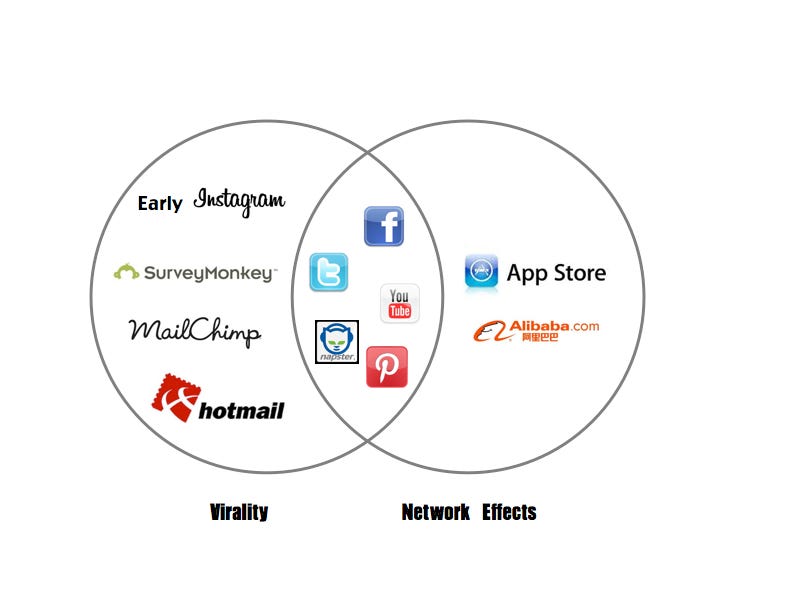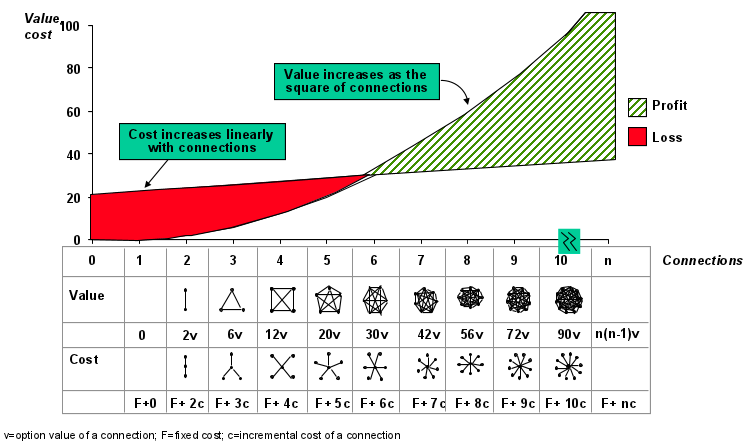Cross-Examining the Power of Network Effects
Jorgensen, in his Medium article The Power of Network Effects: Why they make such Valuable Companies, and how to Harness them, a part of the Evergreen Business Weekly educational series, defines and describes network effects and their lasting impact on the world economy, specifically examples in the business world. He first speeds through the types of network effects: direct, indirect, two-sided, local; then, he further elaborates on what network effects are not (virality, economies of scale), and finally, Jorgenson describes why and how to create powerful network effects. The most important concepts drawn from this article are the distinguishing factors between network effects and virality, the analysis of powerful network effects, and the methods of value creation leading to network effects. Beginning with virality, he distinguishes that network effects are commonly conflated with other ideas such as virality; he clarifies that some tools and products may “exhibit virality without exhibiting network effects” and vice versa.
 Source: https://cdn-images-1.medium.com/max/1000/1*G89V8Ozx1NmhUKZIC2AWIw.jpeg
Source: https://cdn-images-1.medium.com/max/1000/1*G89V8Ozx1NmhUKZIC2AWIw.jpeg
His article continues with network effects, diffusion, and powerful impact. Looking at the graph below, Jorgensen asserts that to conceptualize the power of network effects, a person just has to understand one statement: “Value Increases Exponentially — Costs increase Linearly.”
 Source: https://cdn-images-1.medium.com/max/1000/1*wgatV3ETkdCgEFpoylSKrw.png
Source: https://cdn-images-1.medium.com/max/1000/1*wgatV3ETkdCgEFpoylSKrw.png
Looking at the past readings and assignments, we see how network effects affect the equilibria, reservation pricing, and the idea that rich-get-richer. “What a person is willing to pay or the costs they’re willing to bear to use a product or service actually depends on how many other people they think are going to use this product or service.” (https://youtu.be/R8E41ptoj2c).
https://youtu.be/R8E41ptoj2c
Finally, Jorgensen continues into the creation of network effects in Instagram’s filter tools and Facebook’s humble beginnings. His examples of Instagram and Facebook reference the same ideas brought up in class; specifically, Jorgensen highlights the idea of “minimum viable critical mass” in reference to Facebook’s origins at Harvard University. This social networking platform originated in “miniscule markets,” types of markets good for network effect creation, just as our course constantly references Facebook’s network and how “[it] is more valuable if more of the people that they know actually use Facebook. We see network effects at work everywhere in real life. Highlighting the example that Jorgensen brings up in his article, in the paragraphs concering economies of scale, we see college students pushing their friends to get iPhones in order to use iMessage, an application of network effects. Additionally, network effects exist not only in the creation of Facebook, but also in the recent development of the internal Facebook group “subtle asian traits.” This group originating in a miniscule market, in Australia, targeted Asian-Australians and their upbringing. The spread of this behavior embodies the concepts in ps8’s question #2. Eventually, the group’s popularity spread to the states, and through network effects (essentially, the flooding of #relatable posts and more user, in turn creating more value), the Facebook group saw an exponentially explosive rise in numbers and traveled from college campus to campus. Due to the development of technologies and increases in network ties, network effects play a big role in our world today, making for a prime topic of discussion in information networks, social media, the business world, and every aspect of our lives.
